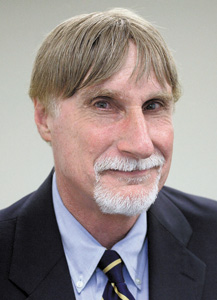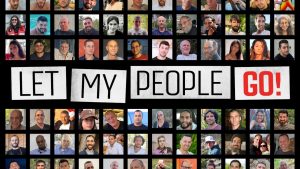Aftermath of Boston Bombings: Thoughts on fighting ‘War on Terror’
Published May 30, 2013
It has now been well over a month since the Boston Marathon bombings, enough time to allow us to avoid a rush to judgment and to begin to formulate some reasoned thoughts about where this incident fits into the larger problem of the “War on Terror.” President Obama, in his speech at the National Defense University on May 23, questioned whether we should use such a term. Whatever one wishes to label this conflict, what distinguishes it from all other previous “wars” fought by the United States, is that temporally and geographically it seems endless – it is unlikely we will ever catch the last terrorist or hold a surrender ceremony on the USS Missouri or any other battleship, and the “battlefield” itself ranges all across the globe on land, air, and sea, from Boston to Benghazi. And therein lies the problem: Winning this war requires not merely the endurance of a long-distance runner rather than sprinter, but also the ability to understand one’s adversary, the nature of the challenge, and exactly when to be aggressive and when not to.
There is a great debate ongoing among scholars and commentators as to how serious the terrorism threat is and how best to confront it. On one side are the likes of John Mueller of Ohio State University, whose recent book “Overblown” argued that both George W. Bush and Obama have exaggerated the threat, that the leadership of al-Qaida has been decimated, that the chances of an American being killed by a terrorist are less than being hit by lightning or drowning in your bathtub, and that we have unnecessarily overreacted in terms of employing excessive airport screening and surveillance cameras that have infringed on civil liberties domestically as well as committing excessive drone strikes and other uses of armed force that have harmed our reputation internationally. In Steven Pinker’s 2012 book “The Better Angels of Our Nature,” he noted that only 11 people had been killed by terrorists on American soil since 9/11. Likewise, Micah Zenko and Michael Cohen, in “Clear and Present Safety” (Foreign Affairs, April 2012), pointed out that an overwhelming percentage of all terrorist victims in recent years have been limited to the four war zones of Afghanistan, Pakistan, Iraq, and Somalia and that “in most places today –and especially in the United States – the chances of dying from a terrorist attack or in a military conflict have fallen almost to zero.” Marc Sageman and Fareed Zakaria have offered a similar analysis.
On the other side are the likes of Bruce Hoffman, whose “Inside Terrorism” considers the terrorism threat more serious than ever, given the potential use of weapons of mass destruction, the growth of radical religious-based groups, and, as evidenced by 9/11, the fact that whereas terrorists used to commit skyjackings and other spectacular violence for the purpose of “wanting to have a lot of people watching,” they increasingly appear to “want a lot of people dead.” His view has been shared by such observers as George Will, Charles Krauthammer and Tom Friedman.
The Boston Marathon bombings, committed by two seemingly home-grown “lone wolf” brothers (albeit with foreign connections) using relatively crude explosives that resulted in three dead, 14 amputees, and over 260 injured –with much more carnage likely had they been able to pursue their planned attack on Times Square in New York City – were a reminder of how terrorism still poses arguably an existential threat to America, especially when one realizes how vulnerable our bridges, seaports and infrastructure, nuclear power stations, electronic grids, cyber networks, and other assets are. In some ways, the terrorist threat is now more difficult to manage as al-Qaida and other such organizations have become more decentralized and isolated cells and persons prey on soft targets. If we have to be careful not to overstate the threat, we also should not understate it.
So how do we deal with the terrorism problem? First, we need to do a better job of defining the phenomenon. Terrorism is essentially the use of unconventional violence aimed at publicizing or advancing a specific political agenda, committed generally by non-state actors against noncombatants. That is, the violence not only has to be out of the ordinary, but there has to be some explicit political purpose served, the perpetrators normally do not wear uniforms, and they explicitly target innocents and observe no rules of civilized behavior. Evil as he was, Al Capone was not a terrorist, and neither were the Newtown or Aurora shooters.
Readers can decide whether to call the Tsarnaev brothers simply criminals or deranged individuals, or terrorists; I would affix the latter label, but admittedly these categories are not clear-cut, which complicates our efforts to address the problem. Although some have called U.S. drone strikes fired by CIA joystick operators acts of terrorism, there is no evidence that Washington has deliberately, explicitly aimed at civilians, as opposed to suspected militants, as the primary target, granted collateral damage tragically often accompanies the strikes and opens the U.S. to criticism.
What is most needed in fighting the war on terror is the emergence of a new global norm affirming that, no matter one’s grievance, under no circumstances is it OK for any individual or group to get up in the morning and ask “how many babies can we kill today?” I have heard too many fellow academics and others make the argument that “if you are the weaker side, anything goes,” that “asymmetrical warfare” requires and justifies the lesser party blowing up pizzerias or marathon race finishing lines.
Some commentators, including Tom Brokaw, suggested that U.S. foreign policy was to blame for the Boston incident. It is fair to debate whether American drone strikes and other anti-terror policies are effective or instead create more terrorists, but it is not helpful to be an apologist for radical Islam or other groups bent on mindless murder and mayhem. (One might have hoped that, after offering the brothers Tsarnaev political asylum from Dagestan, giving them green cards and, in the case of the younger one, U.S. citizenship, and issuing them welfare checks courtesy of American taxpayers, we might have defused their hatred toward the United States or at least earned their indifference toward our country. So much for the supposed uses of “soft power.”)
Certainly the United States could stand to reexamine its behavior to insure we are living up to our highest ideals both abroad and at home, in our eyes and the eyes of others. But we also need to be realistic. After the Boston bombings I recall reading a St. Louis Post-Dispatch editorial that seemed to express more concern for the rights of the alleged perpetrators of the violence than for the victims. The editors did not understand the following: (1) The predominant national security threat in the future is likely to come from nonstate actors such as al-Qaida, as terrorism is the new mode of “warfare” in the modern world; (2) In an age of WMDs, this threat is unprecedented insofar as it could lead to the annihilation of an American city or, at a minimum, dozens of Boston massacres; (3) We thus must be able to distinguish between applying a “warfare” paradigm as opposed to a “lawfare” paradigm, that is, as much as we may want to promote due process of law, Miranda warnings, and civil liberties, there may be times when, to get vital intelligence and prevent further violence, a perpetrator may be labeled an “unlawful combatant” and may not be entitled to the entire panoply of constitutional rights reserved for “criminals.”
The Obama speech was a step in that direction.
Of course, we have to be sure we are using sound criteria when we apply the “warfare” paradigm and should use it with great discretion, not wishing to undermine our most precious values. But we nonetheless have to weigh individual rights vs. public safety from mass slaughter –keeping in mind Justice Robert Jackson’s admonition that “the U.S. Constitution is not a suicide pact.” The Boston Marathon case seems to occupy a murky nether-nether land between 9/11 and Columbine on a spectrum of horrific, random violence. If the War on Terror is ever to be “won,” we will need to sort out the terrorists from the garden-variety criminals and the lost souls.


















